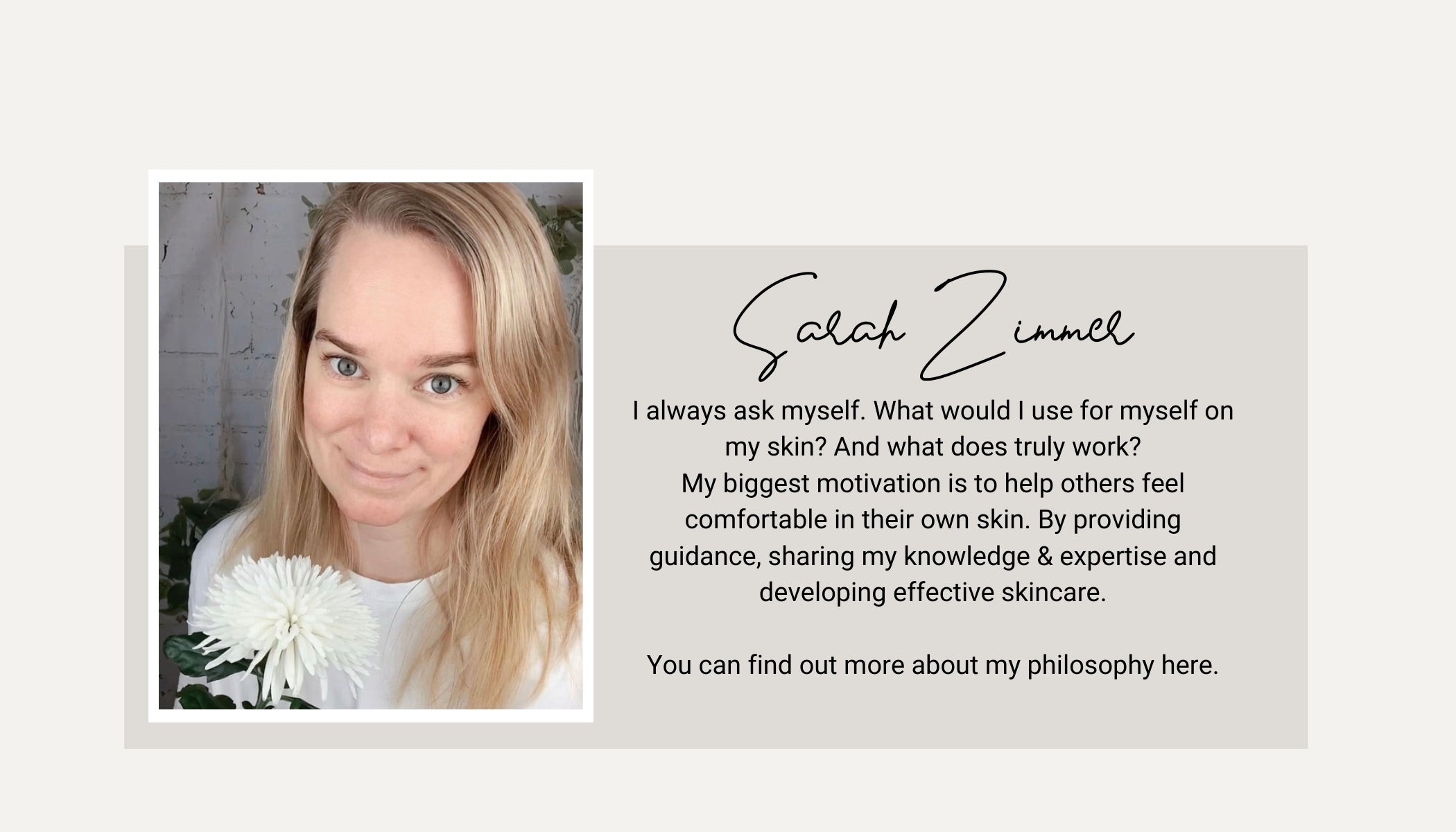Beeinflusst Sonnenschutz mein Vitamin-D-Level?
SONNENSCHUTZ UND VITAMIN D-MANGEL
Vitamin D spielt eine entscheidende Rolle für die Gesundheit, und eine der Hauptquellen dieses Nährstoffs für den Menschen ist die UVB-Bestrahlung der Sonne. Es ist jedoch wichtig zu wissen, dass UV-Strahlung auch zu Hautkrebs und vorzeitiger Hautalterung beitragen kann. Daher ist es entscheidend, das richtige Gleichgewicht zwischen der Aufnahme von Vitamin D und dem Schutz vor UV-Schäden zu finden. Obwohl dies ein sehr umstrittenes Thema mit wenigen klaren Richtlinien ist, möchte dieser Artikel die bestmöglichen Erkenntnisse liefern. Wir werden im Folgenden auf folgende Aspekte eingehen.
WAS IST VITAMIN D?
Vitamin D ist ein lebenswichtiger Nährstoff mit einer Vielzahl von Funktionen im Körper. Die bekannteste Funktion ist die Aufrechterhaltung des Kalziumspiegels und die Förderung der Knochengesundheit zur Vorbeugung von Osteoporose und geschwächten Knochen. Es wird jedoch auch angenommen, dass es eine Rolle bei verschiedenen anderen Prozessen spielt, einschließlich der Krebsprävention, der Herzkrankheitsbewältigung, des metabolischen Syndroms und der Gewichtskontrolle.
Die Produktion von Vitamin D erfolgt natürlich in der Haut bei der Exposition gegenüber UVB-Strahlung. Insbesondere UVB-Strahlung im Wellenlängenbereich von 270-300 nm stimuliert die Synthese von Vitamin D, wobei die höchste Produktion bei etwa 295-297 nm erfolgt. Die Menge an produziertem Vitamin D wird durch Faktoren wie geografische Lage (Breitengrad), Saison, Tageszeit, Hautfarbe und regelmäßige körperliche Aktivität, die die Vitamin D-Synthese unterstützt, beeinflusst.
Obwohl es einige Nahrungsquellen gibt, die Vitamin D liefern, wie Pilze, fetter Fisch, Leber, Käse und speziell angereicherte Lebensmittel, tragen diese nicht mehr als 10 % des durchschnittlichen Vitamin D-Bedarfs eines Erwachsenen bei. Daher sind Vitamin D-Präparate als alternative Option erhältlich.
Statistiken zeigen, dass etwa 23 % der australischen Erwachsenen und 32 % der US-amerikanischen Erwachsenen einen Vitamin D-Mangel aufweisen, was die Häufigkeit dieses Mangels in diesen Bevölkerungsgruppen unterstreicht.
BEINFLUSST SONNENSCHUTZMITTEL VITAMIN D?
Da Sonnenschutzmittel die Menge an UVB, die die Haut erreicht, verringern, scheint es logisch, dass Sonnenschutzmittel die Vitamin D-Produktion verringern würden, aber eine Studie aus dem Jahr 2009 hat gezeigt, dass dies nur wenig Einfluss hat. Der Grund dafür scheint zu sein, dass die meisten Menschen Sonnenschutzmittel nicht ausreichend auftragen, und selbst wenn du denkst, dass du es tust, bekommen die Stellen, die du verpasst (wie die Kopfhaut, zwischen den Fingern etc.), genug UV, um ausreichend Vitamin D zu produzieren.
WIE BEKOMME ICH DIE RICHTIGE MENGE SONNE?
Ein praktischer Ansatz zur Berücksichtigung verschiedener Faktoren, die die Vitamin D-Produktion beeinflussen, besteht darin, die erforderliche UV-Exposition mit der minimalen Menge UV zu vergleichen, die einen Sonnenbrand verursachen kann, bekannt als minimale erythemale Dosis (MED). Forschungen legen nahe, dass es ausreicht, 25 % des Körpers 2-3 Mal pro Woche der halben MED auszusetzen, um eine ausreichende Vitamin D-Synthese zu gewährleisten. Es ist wichtig zu beachten, dass der Körper für 1-2 Monate auf gespeichertes Vitamin D in den Geweben angewiesen sein kann, was bedeutet, dass eine ganzjährige Exposition nicht unbedingt notwendig ist.
In den Vereinigten Staaten sind spezifische Richtlinien für sichere Sonnenexposition noch nicht weit verbreitet. Einige Forscher schlagen jedoch vor, dass du 15 Minuten in der Sonne verbringst, wobei Gesicht, Arme und Beine 2-3 Mal pro Woche zwischen 11 und 15 Uhr von Mai bis Oktober der Sonne ausgesetzt sind. Diese Empfehlung gilt für Personen mit dem Hauttyp Fitzpatrick II, wobei die Expositionszeit kürzer ist, wenn mehr Haut exponiert ist, und länger für Menschen mit dunkleren Hauttönen.
Die Australian and New Zealand Bone and Mineral Society sowie die Australasian College of Dermatologists, Cancer Council Australia, Endocrine Society of Australia und Osteoporosis Australia haben im Januar 2016 gemeinsam einen Satz von Richtlinien für Australien veröffentlicht:
- Wenn der UV-Index zur Mittagszeit 3 oder höher erreicht, wird empfohlen, beim Aufenthalt im Freien für mehr als ein paar Minuten Sonnenschutzmaßnahmen zu ergreifen. Dennoch können die meisten australischen Erwachsenen weiterhin ausreichende Vitamin D-Spiegel durch unabsichtliche Exposition bei regelmäßigen Outdoor-Aktivitäten erreichen.
- Im späten Herbst und Winter, wenn der UV-Index unter 3 fällt, ist Sonnenschutz nicht erforderlich. Es wird empfohlen, dass Personen an den meisten Tagen der Woche Zeit im Freien verbringen und dabei etwas Haut aussetzen.
Für Menschen im Vereinigten Königreich empfiehlt der NHS aufgrund des hohen Bewölkungsgrades und der niedrigen UVB, dass fast jeder in den Wintermonaten ein tägliches Vitamin D-Präparat in Betracht ziehen sollte.
DINGE, DIE DU BEACHTEN SOLLTEST
Sonnenexposition ist nicht nur UVB-Exposition. Die Sonne produziert auch schädliches UVA, das keine bekannten gesundheitlichen Vorteile hat, sowie IR und sichtbares Licht. UVB ist mittags am stärksten, während die UVA-Werte den ganzen Tag über relativ konstant bleiben. In Bezug auf das Kosten-Nutzen-Verhältnis ist dies die beste Zeit, um maximale Vitamin D-Produktion zu erzielen und gleichzeitig die Exposition gegenüber anderen schädlichen Strahlungsarten zu begrenzen.
Nur kurze, nicht brennende Expositionen sind für die Vitamin D-Produktion erforderlich. Längere Sonnenexposition erhöht dein Risiko für Melanome und andere Hautkrebsarten, insbesondere wenn du einen Sonnenbrand bekommst.
UVB geht nicht durch Glas, sodass Sonnenlicht durch ein geschlossenes Fenster nicht zu deinen Vitamin D-Spiegeln beiträgt, aber UVA-Schäden erhöht.
Solariums produzieren viel mehr UVA (die Bräunung verursacht) als UVB, weshalb sie viel riskanter sind als natürliches Sonnenlicht.
Du solltest trotzdem Sonnenschutz verwenden.
Bitte beachte, dass dies keine medizinische Beratung ist und den Rat deines Arztes nicht ersetzt. Es ist am besten, den Rat einzuholen, wenn du Hilfe in Bezug auf deine Vitamin D-Spiegel benötigst.
ZUSAMMENFASSEND
- Kurze Zeiträume in der Sonne zur Mittagszeit sorgen für ausreichendes Vitamin D, während du dein Risiko für Hautkrebs und Fotoalterung minimierst.
- Vermeide weiterhin Sonnenbrand und UVA.
- Sonnenschutzmittel machen dich wahrscheinlich nicht signifikant vitamin D-unterversorgter als du bereits bist.









Hinterlasse einen Kommentar